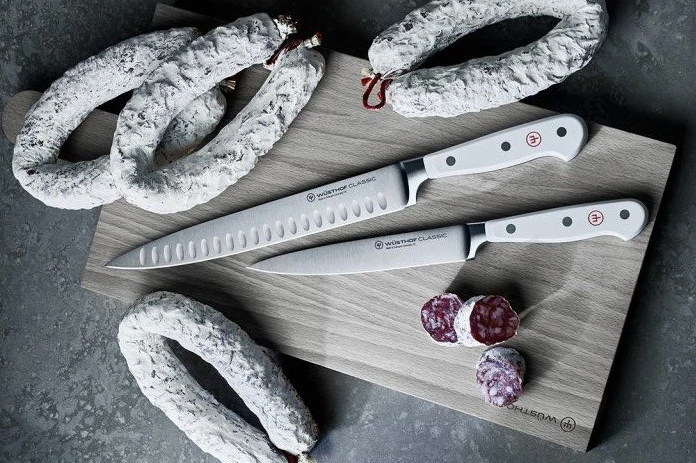Ham and Sausage Knives
Product sorting
8 items total
List of products
Listing controls
8 items total
Ham Knives: Precision Tools for Perfect Slices
Ham knives are specially designed for slicing thin, even slices of ham, but also other charcuterie and roasted meats. Thanks to its long, narrow, and slightly flexible blade, it allows for precise cuts without tearing the meat's structure.
Characteristics of Ham Knives
- Long and Narrow Blade – blade length ranges from 20 to 32 cm, allowing for a smooth, continuous cut.
- Flexibility – the slightly flexible blade adapts to the shape of the ham for maximum cutting precision.
- Ergonomic Handle – ensures a comfortable and secure grip while slicing.
Our tip
Read also

Ham knife: why do you need one?
If you appreciate precise, thin, and even slices that perfectly highlight the texture and flavour of the meat, you need a ham knife. We'll advise you on how to choose the best one.
WÜSTHOF: Leading Ham Knife Manufacturer
The German brand WÜSTHOF is among the best knife manufacturers in the world. It is renowned for its precision and the use of high-quality steel. In their assortment you will find ham knives in various lengths and designs.
Tips for Choosing a Ham Knife
- Blade length – choose the length according to the size of the ham or meat you will be slicing.
- Blade material – opt for stainless steel knives for their durability and ease of maintenance.
- Handle – an ergonomic shape and non-slip material ensure safety and comfort during use.
Caring for your ham knife
To keep your ham knife sharp and long-lasting, it is recommended to wash it by hand under running water and dry it immediately. Regular honing with a steel or sharpening on a stone will ensure it is always ready for perfect slices.









